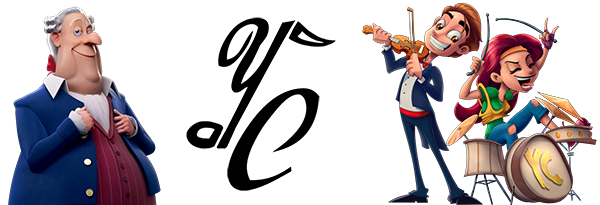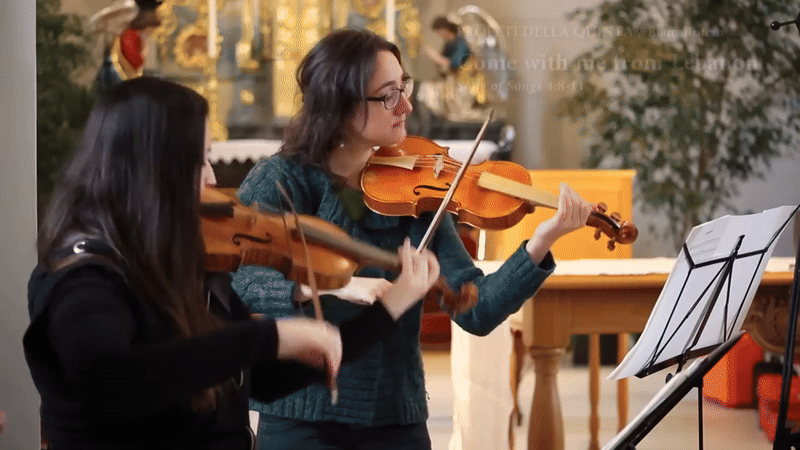-
Posts
13 -
Joined
-
Last visited
About L.S Barros

- Birthday March 31
Profile Information
-
Biography
Hey! I am Luckas dos Santos Barros, i am a composer from Brazil specialized in european music of the early 17th century and also late 16th century.
-
Gender
Male
-
Location
Brazil
-
Interests
I like Architecture, Musicology and Organ building, besides never have building an organ before.
-
Favorite Composers
Emilio de Cavalieri, Girolamo Frescobaldi, Orlando di Lasso, Michael Praetorius, Schutz, Johann Rosenmuller, Giulio Caccini, Monteverdi, Giovanni Gabrieli
-
My Compositional Styles
Early Baroque and late Renaissance
-
Notation Software/Sequencers
Musescore
-
Instruments Played
Keyboard in general
Recent Profile Visitors
1,280 profile views
L.S Barros's Achievements
-
Hahaha thank you.
-
L.S Barros started following SCHOLA CANTORVM DISCORDIENSIS - An early music discord server
-
The Schola Cantorum Discordiensis is a discord server focusing on early music! (More specifically in the server, from medieval times to the 19th century). We have a bunch of cool things, gaming, compositions, monthly challenges, competitions, memes... And many more! Currently the server is very small, about 150 members, my goal is to get to atleast 500. Join us!
-
Thanks!
-
Thanks! The thing is that the piece plays 2 times, one wich just the crumhorns and then the tutti. It was very common to do that in early suites like Banchetto Musicale from Schein. Or any other dance ment to be played in concertato manner (many instruments).
-
L.S Barros started following I made this early baroque sonata for 5 instruments and Basso Continuo. , Microtonal Violin Sonatina in B , My 200th work! and 1 other
-

Microtonal Violin Sonatina in B
L.S Barros replied to PeterthePapercomPoser's topic in Chamber Music
Very nice, in some parts it kinda sound like an old recording. Very good! -
This is my 200th work, and i find incredible that i managed to come this far in sucha small time. For my 200th work i decided to make my bread and butter, Galliards! This is for Crumhorn consort, Recorder consort, Rackett, Bassoon, Percussion and Harpsichord. Enjoy! ❤️
-

Motet for 2 villagers in the style of the Carlo G. Manuscript.
L.S Barros replied to L.S Barros's topic in Chamber Music
Thank you! -
I made this composition while testing a virtual organ i really liked back in the day, its for 2 villagers as the title suggests but it was originally for Violin and Soprano. Since musescore can not render lyrics and AI sites that do that are very pricey i decided to just change to the villagers. Enjoy! ❤️
-
Thank you! I used the default Musescore and the Jeux de orgues soundfonts as i don't know how to work with VSTs (And even if i knew VSTs dedicated to early music are scarse).
- 6 replies
-
- early music
- baroque
-
(and 7 more)
Tagged with:
-
Thanks! But it actually does not have a form, early baroque sonatas does not have a form at all, it was more based in sections, and it was one single movement, but in those different sections there could be different time signatures, rhythms, modes, tempi... So its a very free style. And also we don't work with phrases, more like motifs, and the imitation and developing of those. About the reverse chord idea its already very much common in all the early baroque repertoire and also renaissance, the only thing about picardy thirds is that they are basically optional now days, but back in the renaissance and baroque it was basically obligatory, because the most common temperament in that time were Meantone temperaments, which favor pure major thirds and sixths. Because of that most of the cadences are indeed using it, but its not really obligatory, you can have an entire piece without any picardy third, and to standarts of that time period it would be completely fine. The reason i use them is because they were obviously more common than the normal minor chords and because they sound nicer to the ears, since the melodic line of the voice which creates the major third in the end is almost like sweetened, and its much easier to sing than the otherwise natural interval.
- 6 replies
-
- 1
-

-
- early music
- baroque
-
(and 7 more)
Tagged with:
-
Hey! I made this Early baroque sonata for 3 sackbuts, 2 violins and B.C. Its already my 7th sonata i have made and i am really proud of it.
- 6 replies
-
- 1
-

-
- early music
- baroque
-
(and 7 more)
Tagged with:


.thumb.png.1e2763f479362bbb522da50d31ef2e50.png)






